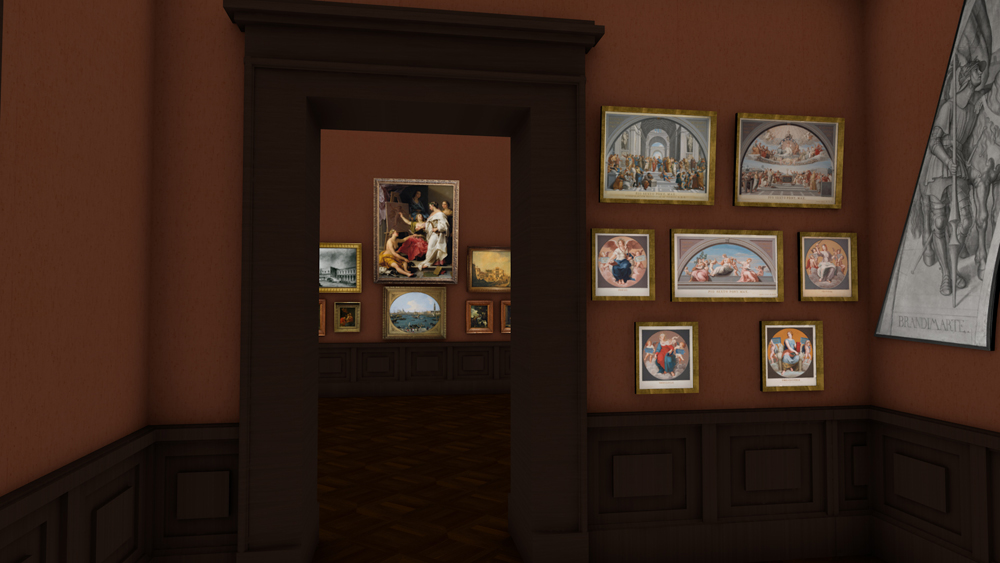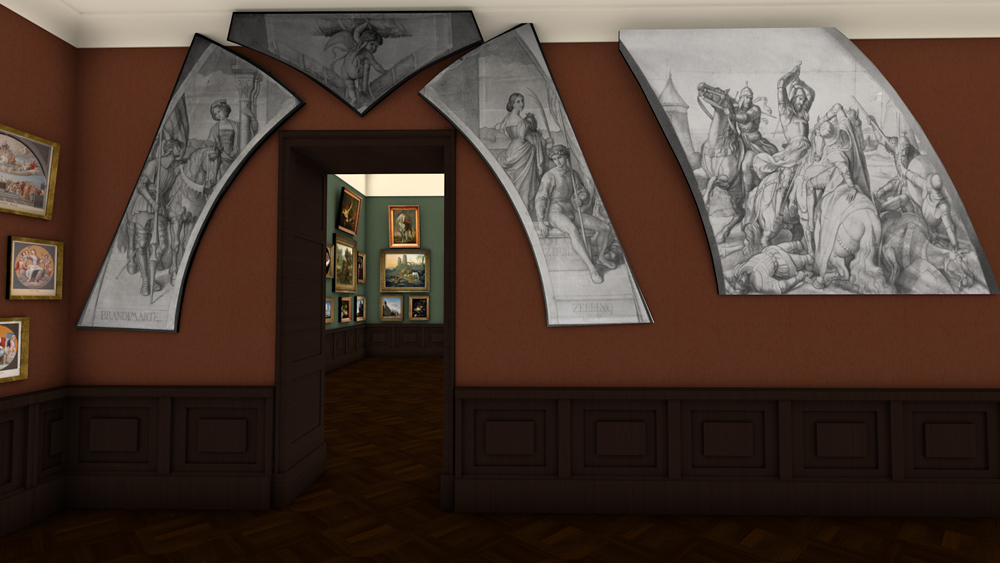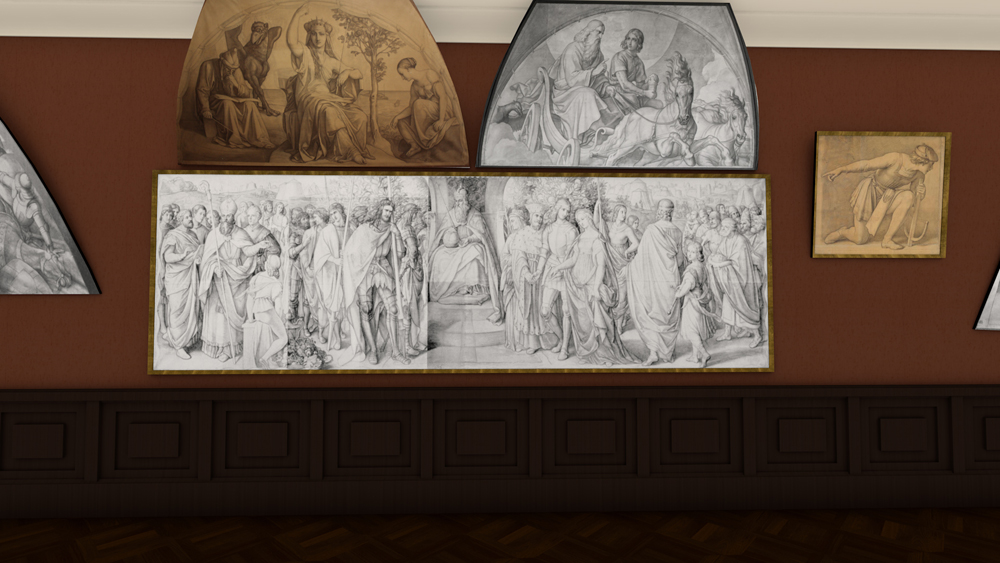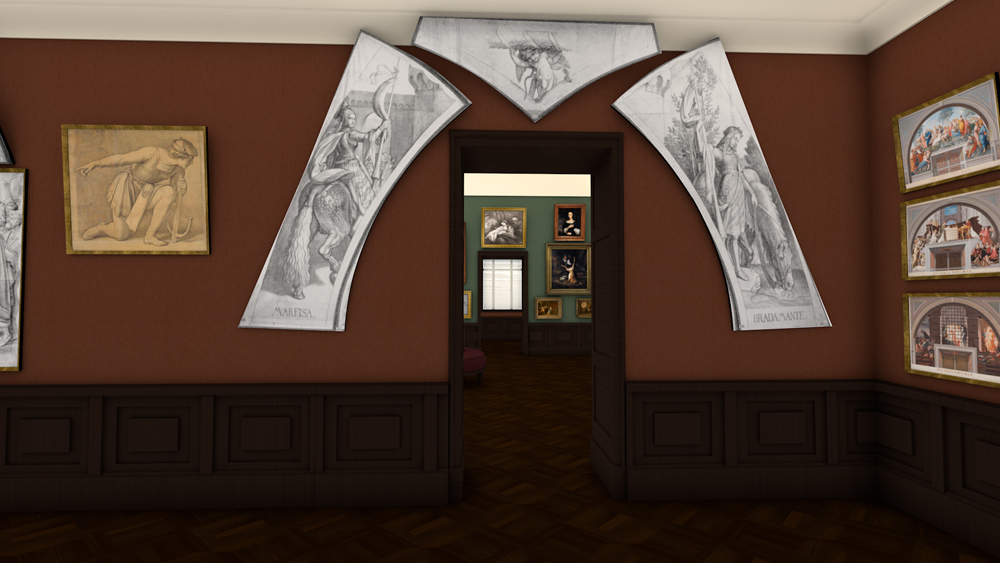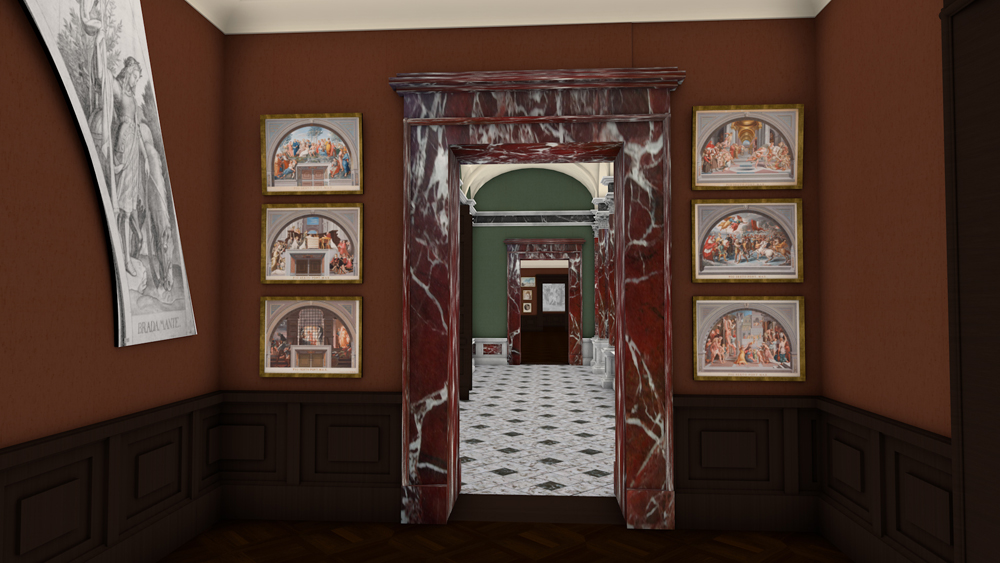1878 Southwestern gallery
Schnorr von Carolsfeld
and Raphael’s Stanze
Visitors of the southwestern gallery may already have been impressed by the sheer size of the exhibited works: presented here was a selection of the design drawings by Julius Schnorr von Carolsfeld for the painted decoration of the central hall of the Casino Massimo in Rome.
Schnorr’s subject was Ariosto’s “Orlando Furioso”, an Italian Renaissance epic celebrating the heroic deeds of Charlemagne’s famous paladin. Displayed on the left side of the room’s longitudinal wall were Roland’s (“Orlando’s”) loyal followers, Brandimarte and Zerbino, as well as their wives, with a fleeing Cupid depicted in the spandrel. Its counterpart, a friendly Cupid, accompanies the cartoon on the right side of the door, which shows the women with the Saracen hero Ruggiero, who was in love with the Christian Bradamante. The defeat of the Saracen army at the Battle of Lipadusa – shown on the left – allowed Ruggiero to marry Bradamante. The wedding is depicted taking place before the throne of Emperor Charlemagne, which the couple approaches from the right and the hero Roland approaches from the left. This cartoon, which marks the end of the story and was designed for the ceiling fresco at the Casino Massimo, was exhibited in the centre. It has been lost, like most of Schnorr’s other drawings.
The great importance awarded to Schnorr’s drawings becomes clear through the accompanying prints. Displayed on the two short walls of the room were colourised prints after Raphael’s frescos in the Vatican Stanze. The view into the southwestern corner room, provided by the passageway between the “School of Athens” and the “Disputa”, completed the experience of the exhibition: here, the arc was struck from the Nazarene ideal back to its models, namely Italian Renaissance originals.
Basis
for the reconstruction
Director Malß altered the hanging plan for the southern galleries two or three times.
In the eastern room, the exhibition cabinets that had originally been planned were abandoned in favour of additional wall space.
The presentation of the large-format cartoons in the western gallery may not have failed solely due to the severe damage Schnorr von Carolsfeld’s “Wedding at Cana” (inv.-no. 1012) had suffered. Because of its size, there would have been no space below the cartoons already been planned for the room’s upper register.
In a further revision stage, Malß added a colour drawing by Peter von Cornelius to the right of Schnorr von Carolsfeld’s “Feast of Charlemagne (The Wedding of Ruggiero and Bradamante)”. He failed, however, to remove the “Last Judgement” (inv.-no. 900) from the plan of the eastern gallery.




